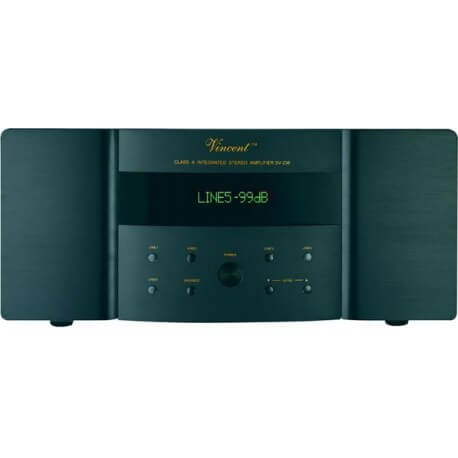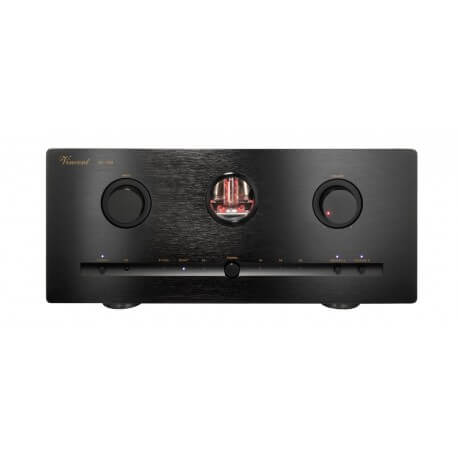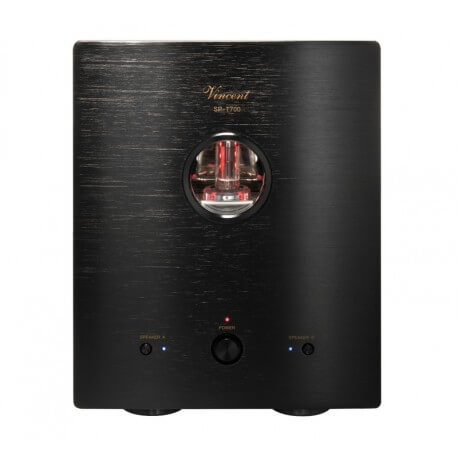- Amplifiers
- 1995 likes
- 33874 views
Class A amplifier: useful info and differences with other classes
Talking about what makes a class A hi fi amplifier unique necessarily leads to making comparisons and drawing differences with how other types of amplifiers work.
In this article we will try to briefly explain the typical characteristics of class A amplifiers, while not going into too much technical detail. In doing so, we hope to do a favorable thing towards those who, before buying an amplifier, want to see clearly.
So let us begin by trying to specify what a class A audio amplifier is, what is meant by pure class, and the differences with other equipment intended to drive speakers and loudspeakers.
Class A amplifier: what does it mean?
Let's start by saying that, in today's context, buying a class A amplifier is quite rare. Dominating it are the class D variants, based on switching, which we will come back to better in a moment.
In any case, class-A amplifiers turn out to be excellent when one needs to amplify signals with very little distortion. In these devices, the transistors work at rest on half the diagonal line of the load line, thus ensuring efficient performance.
The main disadvantage is that a class A produces much, much heat to dissipate. This is because of the continuous absorption by the transistors, even when the signal is absent. Devices of this type, therefore, always operate at maximum available power.

The merits of a pure class A amplifier
Buying class A amplifiers is in some ways an elitist act. Especially when it comes to "pure class A."
This term is used to highlight the difference between amplifiers that operate exclusively on class A principles, and those that "can" operate as class A instead. Type AB amplifiers, for example, can operate as class A. It depends on the value of the quiescent current and theload impedance.
The discussion should necessarily veer toward technical topics, but instead we want to keep it on a less in-depth level. Suffice it to say that with pure class A it is possible to drive a limited share of speakers. 50 W of class A, however, in terms of driving equates to much higher values than devices belonging to other types of construction.
Their tonnage, then, is often important. This is due to the presence of rather massive cabinets, large transformers, and cooling systems that, as seen, must always operate at maximum.
If you take a few examples from our catalog as examples, you can quickly verify this dynamic. The Vincent SV-238 MK, a real jewel of amplification, weighs about 32 kg. All this raises weights, footprint and, in some cases, costs.

What is the difference between class A, B and AB amplifiers?
As anticipated earlier, the link between class A and B amplifiers is quite close. It seems appropriate, therefore, to make a brief differentiation between the various types so as to arrive at a better understanding.
| Class A | Class B | Class AB |
|---|---|---|
| Used to amplify signals with low distortion. Below average efficiency, high heat dissipation. | Designed to improve on the shortcomings of class A, provides high power at the cost, however, of higher distortion. | Especially common in HiFi equipment, it combines the merits of the two classes, namely efficiency and low distortion. |
In class A, amplification of the audio signal requires high power consumption, independent of that emitted by the speakers. In class Bs, on the other hand, the music signal--consisting of a set of waves of a sinusoidal nature--is divided into two. From time to time, one part is amplified, while the other is at rest. The power consumed compared to class A is less, and depends on the power delivered.
Class AB, as anticipated, was created to combine the benefits of the two solutions.
What about class D amplifiers?
We have discussed this type of audio amplifiers extensively in the article, "Characteristics and Operation of a Class D Amplifier. " Here, it is only worth mentioning the main advantage of these devices over other types, namely high efficiency.
Comparison with class ABs sees class Ds coming out as clear winners. The efficiency of a class D is around 90%, as opposed to ABs, which range between values of 50% and 70%. By efficiency we mean the ability to deliver as much rated power as possible to the speakers. In a 50 W class AB amplifier, therefore, the effective power can be as low as about 35 W.
HiFi Prestige's class A amplifier offering
In our catalog of audio solutions we are fortunate to include numerous types of amplifiers.
As far as class A amplifiers are concerned, extensive is the Vincent-branded offering. In addition to the aforementioned Vincent SV-238 MK, other models of absolute interest stand out, such as the SP-T700. A 300 W hybrid on 4 ohm impedance, and 150 W on 8 ohm, with a signal-to-noise ratio of 90 dB and 22 kOhm input impedance.
Not forgetting the SV-700, with its symmetrical design and a frequency response of 20 Hz to 20 kHz. This audio equipment can act in either class A or class AB. in the former case, power consumption is 350 W; in the latter it is 150 W.

If you have any questions or information about our offering of class A amplifiers, integrated amplifiers or other types, please do not hesitate to contact us. We are always available at info@hifiprestige.it, or at 335 6672281.